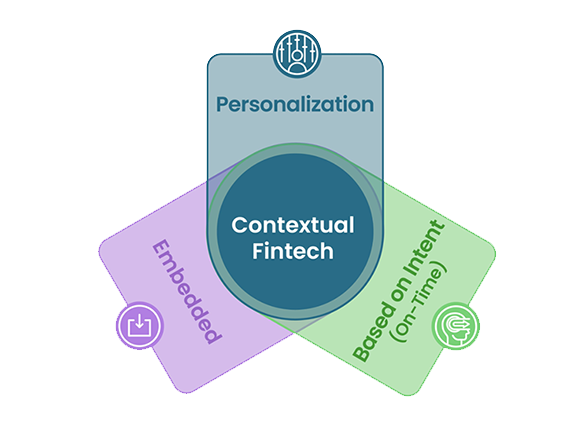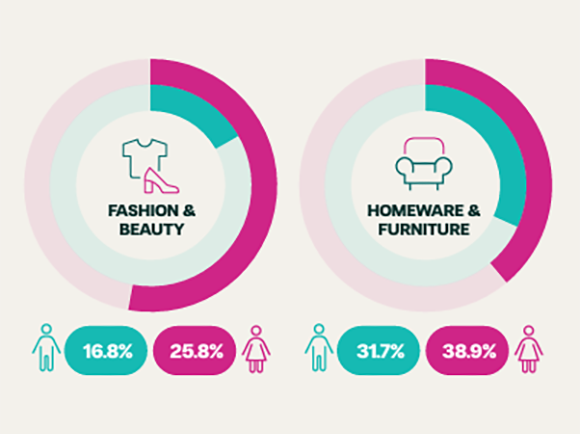Going beyond regulation: What are your ethical responsibilities as a lender?

As retail finance moves quickly towards regulation, merchants and lenders find themselves facing something of a moral quandary.
Yes, the scope of regulation seems quite fundamental – dare we say, even achievable. Better signposting, more stringent affordability checks, greater transparency. All very reachable goals. Indeed, for many providers, these regulations were already well-established within their business models, meaning the eventual impact on their merchant and lender clients will be minimal.
The quandary is not, therefore, whether retail finance can meet the standards of regulation, or how regulation will impact the sector. Rather, it is whether the industry can go even further than the bare minimum, and establish a framework for morally justifiable best practice – a Code of Ethics, if you will.
The case for this code is clear. The future of the industry will depend on all players within the retail finance journey – not just the providers, but the lenders and merchants too – doing their part to protect their own, and each other’s reputations. So far, there are some who could be accused of having done a poor job of this.
You needn’t look far to find the retail finance sector accused of plunging consumers into debt spirals or causing them to be chased by debt collectors. Indeed, it has become all-too-easy for the media to generate shocking headlines about the negative impact retail finance is having on people’s finances. Not that this was unexpected. Lenders slapped a giant target on themselves the minute they went out to market offering a new form of unregulated loan. It was only a matter of time before this product was going to be seen as predatory. See: payday loans, pawn shops, loan sharks.
But see also: mortgages, leasing, business loans, credit cards, bank overdrafts. The salient point here is that not every type of loan need have a negative perception. Indeed, many are widely considered good, even necessary forms of debt. These products have earned their reputations through strengthening accountability, minimising risk and implementing fair, transparent lending practices backed by – you guessed it – strong codes of ethics.
Retail finance should be no different. The sector should be working harder in order to consolidate itself within the category of ‘good loans’. This is an effort that should be undertaken by everyone involved in the industry, from lenders to merchants and platform providers like us.
An ethical charter for retail finance
The question then becomes, what would this framework look like in practice?
Namely, what are our ethical responsibilities when it comes to providing interest-free credit repayments to shoppers?
Upcoming regulation is starting to crystallise into a clear game-plan. Providers, lenders and retailers will be obliged to:
- Ensure they are performing credit checks of a suitable level of comprehensiveness to ensure the consumer is eligible for finance
- Provide clear signposting around the point-of-sale to ensure consumers are aware they are taking out a loan
- To record all loans on a consumer’s credit file, and to make them aware that this will happen
- To be approved and regulated by the Financial Conduct Authority (FCA) and the Financial Ombudsman Service (FOS)
But as we all know, regulation ensures only the bare minimum level of responsibility. If lenders truly want to build retail finance into a sustainable business practice, it will require a combined effort to ensure that consumers are not only well-protected, but completely satisfied too.
With that said, here are five things we believe retailers, lenders and providers should start to either incorporate into their own policies and procedures, or demand of their partners, as a way to start building up an ethical best practice model.
1. Disclosure of funding sources
Merchants don’t make a direct profit on transactions made through retail finance – indeed, strictly speaking, they make a loss on each transaction, as they are required to pay the lender and/or platform provider directly, either in the form of a subscription, a set fee per transaction, or a percentage of their profits. This business model is not widely known among consumers.
The pay-off, and of course the reason merchants subscribe to retail finance, is the promise of increased basket sizes, lower rates of drop-off, and a greater number of transactions. This is how they derive profitability from their retail finance programmes. Again, this often goes over the consumer’s head.
But this, in turn, creates uncertainty and perhaps even a sense of anxiety, as the consumer is left to ponder who is potentially trying to profit from them, and in what way.
The ethical choice would therefore be for the lender, the retailer and the platform provider to be up-front about their relationship, especially when it comes to illuminating how the consumer fits into the picture.
This may mean that the merchant should reveal to the consumer how the lender makes a profit from their purchase, how much of the consumer’s transaction will be claimed by the lender, and – most importantly – how this affects the consumer.
Even if the sum total of these explanations is simply to say that the consumer will not be affected in any way, it still ought to be made explicit.
Disclosure of funding sources may help the consumer to feel less anxious about their transaction, knowing that they are:
- Not being charged extra to choose retail finance
- Not obligated to pay the lender directly
- Not going to be chased for extraneous payments (e.g. transaction fees) after signing their agreement
How should you go about doing this? We recommend simply by adding a line of copy – either at the point of sale, within the lending agreement, or on a separate page on the retailer’s website – reading something to the effect of:
[RETAILER LTD] pays [LENDER PLC] a direct fee of £XX to provide lending services on their behalf. This payment is made exclusively from [RETAILER LTD] to [LENDER PLC] and does not impact you, the consumer, in any way. You will never be expected to pay extra for retail finance.
2. Assessment of whether financing is a necessary mechanism for the consumer
By way of an experiment, we went onto the website of a famous fashion retailer partnered with a number of retail Buy Now, Pay Later (BNPL) providers. To our basket, we added just one item: a single pair of white socks (which cost a frankly absurd £12), then clicked through to the checkout.
Sure enough, at the payment page, we were offered the opportunity to split the cost through one (although not all) of the business’s partners. In essence, we were being given the opportunity to take out a loan on a pair of socks.
Admittedly, we did did not go through the eligibility assessment, and so did not confirm that the purchase could be completed – but it nonetheless serves to highlight an important ethical point: that a business may (willingly or unwillingly) offer retail finance to consumers looking to fund what could conceivably be called ‘everyday purchases’.
To be sure, there are probably some people who could conceivably benefit from taking out a loan on a £12 pair of socks. But the real question is whether it is right for a merchant, a lender or a platform provider to be seen to offer a financing scheme to cover the cost of a pair of socks. It is here that we start to see where a moral line may be crossed.
Where, then, should we draw that line? If not one pair of socks, how about three? Or, is it the socks themselves we should take issue with? Would a £36 backpack be more justifiable? Backpacks are far less ‘everyday’ than socks, after all. But then, what if that backpack costs £12? The argument is circular, convoluted and perhaps never-ending.
But to be clear, it is not any one factor in isolation that ought to concern us. It is not the low ticket cost – some people may welcome the choice of retail finance on a £12 purchase. Nor is it the ‘everydayness’ of the socks. Nor is it the fact we are talking about a single item. No, the moral quandary lies in the combination of all three of these factors. In other words:
Low ticket cost + everyday item(s) + low quantity = ethical grey area
Everyday purchases made through BNPL ought to concern us for the simple reason that they are, indeed, everyday. Were we – as providers, lenders and merchants – to offer retail finance in order to help fund a consumer’s everyday needs, we run the risk of allowing consumers to reach a saturation point in terms of their borrowing.
When a consumer takes out retail finance, they are committing to more than just paying off the cost of that item. They are also committing to remembering that loan for the next three, six, nine months, or longer. Forgetting to pay their debt could cause a consumer to go into arrears, meaning they would have to pay an extra cost as a penalty. Missed payments may also negatively impact one’s ability to gain future credit.
Were we then to offer retail finance for many low-ticket, low-quantity, everyday purchases, the end result could be immense over-saturation of a consumer’s capacity to remember all of their outstanding credit agreements, ergo, the risk of that consumer defaulting on at least one of their loans would increase with each new agreement.
Any consumer is sure to remember the credit agreement they took out on their new mattress or boiler, but would you remember the balance outstanding on the basket of groceries you purchased two months ago?
An interesting question to ask would be at what point a consumer reaches this point of saturation. In other words, how many concurrently active retail finance loans is too many? Could you remember that you need to pay back three outstanding finance agreements? How about nine? Twelve? Twenty?
There is no hard and fast rule to determine what is right and wrong when it comes to providing finance. However, one thing that may help providers, retailers and lenders to identify risk factors is to analyse historical data to discover trends in default rates. If you notice particularly high rates correlating with lower basket sizes, particularly everyday item purchases, or low (especially single) item quantities, this should alert you that those types of purchases ought to be more tightly restricted.
3. Awareness of the power dynamics inherent within the lender-consumer relationship
Perhaps you represent a global retailer employing dozens of staff and selling to thousands of consumers every day. Or, you may be a financial institution controlling millions of dollars.
Consumers, on the other hand, are individuals with a bit of money in the bank, hardly any free time in their life, a family to care for, a job that they are obligated to work 40 hours a week, and a long list of fears and apprehensions.
Imagine, therefore, how a consumer would feel waking up one day to discover a letter on their doorstep, informing them that they owe a potentially life-changing amount of money to a debt collector working on behalf of your organisation, as a result of having failed to pay their loan. Perhaps this letter threatens the consumer with a visit from a bailiff, or legal action.
No doubt the consumer would experience a wide spectrum of emotions, ranging from fear, to anger, to a sense of unfairness. The letter, probably signed on behalf of your powerful organisation, may feel like a targeted attack, an instance of predatory money-grabbing. It certainly wouldn’t do much for your brand reputation. But that’s hardly the worst possible outcome. What if the consumer was motivated to do something drastic to escape the debt they were being forced to repay? The blame could – and very often does – fall back on your business.
This is a situation that everyone involved in the retail process is highly motivated to avoid. Chasing debt does no one any good – indeed, in many circumstances, the cost of recovering a debt is greater than the amount received in repayment.
Yet, at the same time, it is a necessary deterrent. The ethical question is not therefore whether pursuing a debt is right or wrong, but the way in which an organisation should go about it. More specifically, it is the act of taking advantage of a power imbalance that should concern us as providers, lenders and merchants. It is understandably quite scary for an individual consumer to receive a threatening letter served on behalf of a big, powerful organisation, like the one you represent.
What, then, are your ethical obligations? To put it quite simply, it is up to your business to show that it can be empathetic, caring and respectful; that it can approach the situation with a sense of humility and personability; that it takes its share of the responsibility in allowing the situation to get to the point it has; that it will do everything in its power to reach a mutually satisfactory conclusion; and that it does it all from the point of view of a real human being, rather than on behalf of a faceless entity.
When it comes to chasing debt, therefore, make sure you, your lender, or the debt collection agency representing your organisation are:
- Tailoring correspondence to the specific consumer, so that they are aware they are not receiving a boilerplate piece of communication
- Empathising with the consumer’s situation, reassuring them that it is not the end of the world and that your business is motivated to seek a peaceful resolution
- Opening the door to a two-way conversation, taking this as an opportunity to learn about the consumer with the end goal to support them
- Ensuring that the consumer knows their direct point of contact – a real person in yours, or your lender’s company who they can depend on
- Developing an internal system of best practices when it comes to handling debt recovery to ensure consistency and a streamlined process
- Working slowly, ensuring regular communication, and being prepared to help the consumer set up a new payment plan that will help them to manage additional fees
Ultimately, it is up to us, as the powerful businesses in this equation, to protect our reputations in our consumers’ eyes. Be mindful of the power your business wields, and use it responsibly.
4. Procedures to mitigate the risk of financial hardship to the consumer
Of course, the above example is one that should only be considered in a case where the consumer has already fallen into arrears. The best practice in this scenario, however, is to avoid ever getting to that point. The incentive for you, the business, to avoid this situation is (as we said earlier) that debt recovery is often a loss-incurring process, making it a lose-lose situation for everyone involved.
This emphasises the importance of adequate credit checking. Historically, the Buy Now, Pay Later sector has been a bit, shall we say, cavalier in its approach to vetting consumers. Whether by only performing a soft credit check as a means of an affordability assessment, or by failing to communicate adequately about the type of financial agreement a consumer is entering into, it’s easy to see why many consumers have already experienced hardship as a result of choosing retail finance – and why regulation has picked up on these issues specifically.
Perhaps the sector has itself to blame. The process by which a consumer falls into debt is rarely sudden, and is usually caused by that consumer experiencing financial hardship in several areas of their life. Perhaps the cost of their childcare has escalated suddenly, or they have a family member who has suddenly fallen sick. Perhaps the consumer has recently lost their job. The risk of such circumstances is particularly acute at a time like this, when the global cost of living is escalating rapidly.
As we know full well by now – it is, after all, a key factor in the upcoming regulatory changes – a hard credit check is essential to alert the provider, lender and retailer if the consumer regularly experiences these liquidity shortfalls, or whether the loan they were taking out is expected to exceed the consumer’s financial capabilities. Then again, credit checking doesn’t eliminate 100% of the risk. Even a consumer with a spotless credit history may fall on hard times.
What makes the difference in these circumstances, then, is your flexibility as the provider of retail finance. It is up to you to remain adaptable in your approach, accepting that consumers’ situations may change suddenly, and to be ready to respond to these changes while ensuring your duty of care. A good first step will be to build a post-sales communication journey that reminds and reassures the consumer about their loan, while also inviting them to raise any concerns they may have at the earliest opportunity.
Again, historical data may play a helpful role here. Consider the times of year that missed payments and default rates start to increase – perhaps around summer, when childcare costs are higher, or in the build-up to Christmas, when household spending is tighter – and gently nudge your consumers at these times to remind them of their repayment schedule.
If the consumer anticipates that they may not be able to meet their repayment schedule, it’s important that you are able to offer them a plan B (perhaps even a plan C, D and E, too).
These back-up plans should then be fully integrated within your after-sales policies and procedures, with training provided to team members to ensure they know how to act on behalf of the brand.
As above, ensure that your approach is empathetic and personal. Reassure the consumer that your business is there to support rather than to prey on them. Let them know what options they have, and work together to ensure they feel supported. Helping your consumers to meet their repayment schedule, rather than making them feel forced to do so, will reassure them that yours is a trustworthy company.
Better still, by taking this approach, you can naturally lower your default rates and avoid any nasty debt collection scenarios. Suddenly, a lose-lose becomes a win-win situation.
5. A ‘No, but…’ approach to rejection
Naturally, there will be times when your brand needs to turn down a consumer’s application. This is not to say the act of declining a consumer is unethical – indeed, a rejection is the best course of action to mitigate the risk of a consumer experiencing financial hardship down the line.
Rather, we must remember that such circumstances have the potential to feel personal. For a consumer to go through a time-consuming application process, providing sensitive information about themselves, all the while hoping that their application is successful (remember, the product(s) they are buying might be essential to protecting their way of life, and retail finance may be the necessary mechanism to help them afford said purchase), only to receive a message back that ‘the computer says no’ is likely to leave them with a bad taste in their mouths.
Not only can this reflect badly on the provider, the lender and the retailer’s brands, it can also directly impact the consumer’s way of life. It can leave them feeling hurt, or anxious – ‘I thought my credit score was really good, is there something I didn’t know about?’ Suddenly, your retail journey has become inadvertently responsible for impacting the consumers’ general happiness.
In this circumstance, it is therefore endemic on you (especially if you are the lender/provider) to communicate with the consumer and to inform them:
- That you appreciate the time they spent completing your application process
- Why their application was rejected (adding the reassurance that it may not be anything to do with their credit score) – while it may not be possible to provide the exact reason for each consumer, a list of all possible reasons could still help
- What their next steps could be
For instance, if the consumer is attempting to purchase a product that is out of their price range, the retailer may want to signpost that consumer towards a more affordable option. Or, if they have chosen lending terms that are outside of their assumed repayment capabilities, the lender may be able to offer them different terms.
Not only will this approach reassure the consumer in the face of rejection, it will also help to keep them engaged in the retail journey, improving the possibility that they will complete their purchase, while also helping to protect your brand reputation.
The bottom line: look beyond regulation for your own moral compass.
Regulation is coming, and will be a good thing for the retail finance sector. The greater consumer protection promised by regulatory changes will benefit everyone involved in a transaction by ensuring fewer missed repayments, lower risk of defaults and an overall improved reputation for the industry.
But regulation can only take us so far. If the retail finance sector is truly committed to being perceived as a positive force in consumers’ lives, it must go further, by adopting a code of ethics that ensures not just compliance, but total responsibility for consumer wellbeing.
The ideas posited in this article are just a starting point. But at a time when providers are updating their platforms and product offerings to meet the needs of upcoming regulation, the time is right to start considering ideas such as these, or pressuring our partners to make these changes on our behalf.
While developing our frameworks to become compliant, it is also important to ask the question of how and where we can go above and beyond. Ultimately, everyone has their part to play in ensuring that retail finance develops a positive and future-proofed reputation.
Divido is the platform partner enabling lenders and merchants to launch their own-brand checkout finance, fast. Consumer journeys are seamless, and can be optimised to convert more customers at every point of sale, online and in-store.
You might also
be interested in
Keen to know more?








